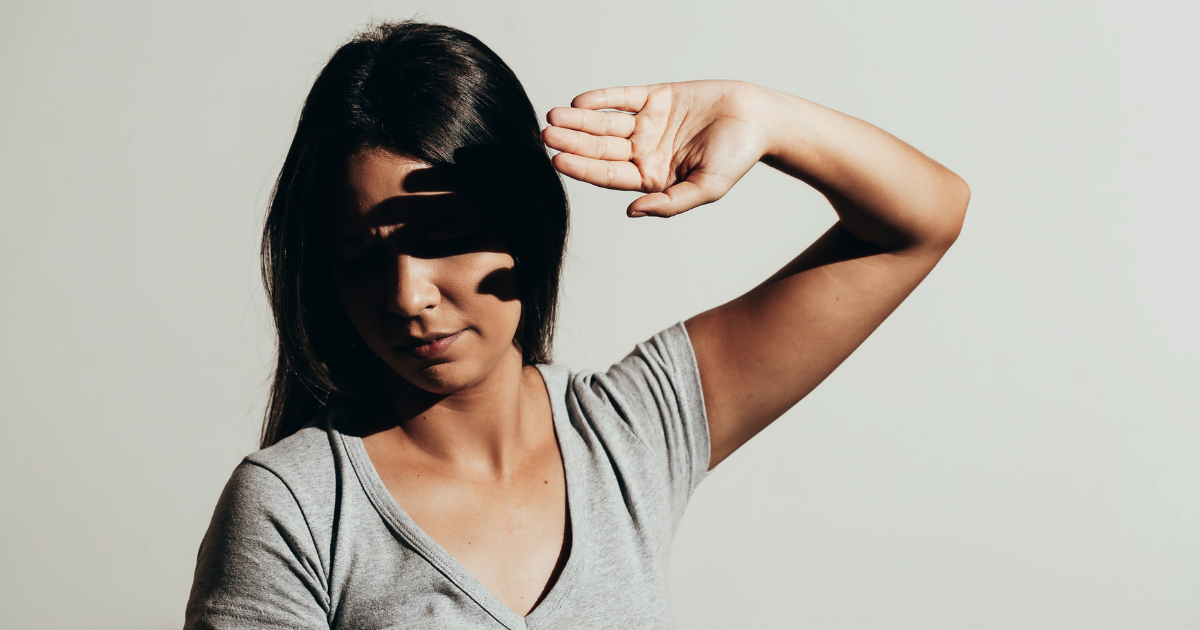Understanding Photophobia: Causes, Symptoms, and Management Strategies

Read time: 4 minutes
For most people, stepping out into the warm sunshine brings a sense of joy and vitality. However, for those suffering from photophobia, or light sensitivity, exposure to bright light can be an uncomfortable and even painful experience. This condition, characterized by an abnormal intolerance to light, can significantly impact daily activities and quality of life. In this article, we'll explore the potential causes of photophobia, its symptoms, and effective management strategies to help alleviate discomfort and improve overall well-being.
What is Photophobia?
Photophobia, also known as light sensitivity or light intolerance, is a condition in which the eyes become overly sensitive to light sources, including natural sunlight, indoor lighting, and even the glare from electronic screens. This sensitivity can manifest as a range of symptoms, from mild discomfort and squinting to severe pain, headaches, and eye strain.
It's important to note that some degree of light sensitivity is normal, especially when transitioning from a dimly lit environment to bright sunlight. However, if the discomfort persists or becomes severe, it may indicate an underlying condition or disorder that requires further evaluation and management.
Potential Causes of Photophobia
Photophobia can arise from various underlying conditions, including:
- Eye Conditions: Certain eye disorders, such as dry eye syndrome, corneal abrasions, uveitis (inflammation of the eye's middle layer), and certain types of glaucoma, can cause increased light sensitivity.
- Migraines and Headaches: Photophobia is a common symptom associated with migraines and other types of headaches, often occurring before or during an attack.
- Traumatic Brain Injury (TBI): Light sensitivity is a frequent complaint among individuals who have suffered a concussion or other forms of traumatic brain injury.
- Meningitis: Inflammation of the membranes surrounding the brain and spinal cord, known as meningitis, can lead to photophobia and other neurological symptoms.
- Certain Medications: Some medications, such as certain antibiotics, antidepressants, and drugs used to treat attention deficit hyperactivity disorder (ADHD), can increase light sensitivity as a side effect.
- Albinism: Individuals with albinism, a genetic condition characterized by a lack of pigmentation, often experience heightened light sensitivity due to the absence of protective pigments in the iris and retina.
While photophobia can be a symptom of an underlying condition, it can also occur without an identifiable cause, in which case it is referred to as "idiopathic photophobia."
Symptoms of Photophobia
The symptoms of photophobia can vary in severity and may include:
- Eye pain or discomfort when exposed to bright light
- Squinting or involuntary eye closure
- Headaches or migraines triggered or exacerbated by light exposure
- Nausea or dizziness
- Increased tear production or watery eyes
- Sensitivity to glare or reflections
In severe cases, photophobia can significantly impact an individual's ability to perform daily activities, work, or attend social events, leading to a diminished quality of life.
Managing Photophobia
Effective management of photophobia often involves a combination of strategies tailored to the underlying cause and individual needs. Here are some potential approaches:
- Identifying and Treating the Underlying Condition: If photophobia is a symptom of an underlying eye, neurological, or medical condition, addressing the root cause through appropriate medical treatment is crucial.
- Wearing Tinted or Photochromic Lenses: Specialized eyewear, such as sunglasses with tinted or photochromic (light-adjusting) lenses, can help filter out bright light and reduce discomfort.
- Using Anti-Glare Filters: Computer screens, tablets, and other digital devices can be a significant source of glare and light exposure. Installing anti-glare filters or adjusting screen brightness can alleviate symptoms.
- Controlling Light Exposure: Modifying the lighting environment by using curtains, blinds, or adjustable lighting can help manage light levels and reduce discomfort.
- Medication: In some cases, physicians may prescribe medication to alleviate symptoms, such as medications for migraines, anti-inflammatory drugs, or prescription eye drops.
- Lifestyle Modifications: Practicing stress management techniques, getting adequate sleep, and avoiding triggers (such as prolonged screen time or exposure to bright lights) can help minimize the frequency and severity of photophobia episodes.
It's essential to work closely with your Urban Optiks Optometry eyecare professional or healthcare provider to determine the underlying cause of photophobia and develop an appropriate management plan tailored to individual needs and circumstances.
Seeking Support and Professional Care
If you or a loved one is experiencing persistent or severe light sensitivity, it's crucial to seek professional medical attention. Your optometrist or ophthalmologist can conduct a comprehensive examination to determine the underlying cause and recommend appropriate treatment options.
In some cases, further evaluation by a neurologist or other medical specialist may be necessary to identify and address any underlying neurological or systemic conditions contributing to photophobia.
Remember, light sensitivity can significantly impact daily activities and quality of life, so seeking prompt medical care and implementing effective management strategies are essential for alleviating discomfort and improving overall well-being.
The Takeaway
Photophobia, or light sensitivity, can be a debilitating condition that significantly impacts daily activities and overall quality of life. While it may seem like a minor inconvenience, persistent or severe light intolerance can be a symptom of an underlying eye, neurological, or medical condition that requires proper evaluation and management.
By understanding the potential causes of photophobia, recognizing the associated symptoms, and implementing effective management strategies, individuals can take proactive steps toward alleviating discomfort and regaining control over their lives.
Share this blog post on social or with a friend:
The information provided in this article is intended for general knowledge and educational purposes only and should not be construed as medical advice. It is strongly recommended to consult with an eye care professional for personalized recommendations and guidance regarding your individual needs and eye health concerns.
All of Urban Optiks Optometry's blog posts and articles contain information carefully curated from openly sourced materials available in the public domain. We strive to ensure the accuracy and relevance of the information provided. For a comprehensive understanding of our practices and to read our full disclosure statement, please click here.


















